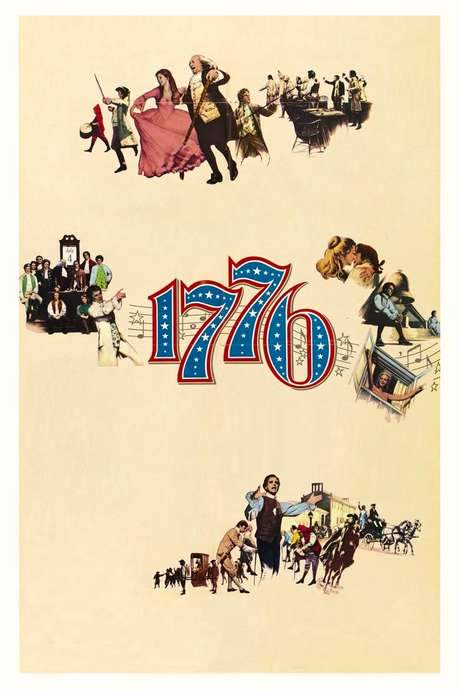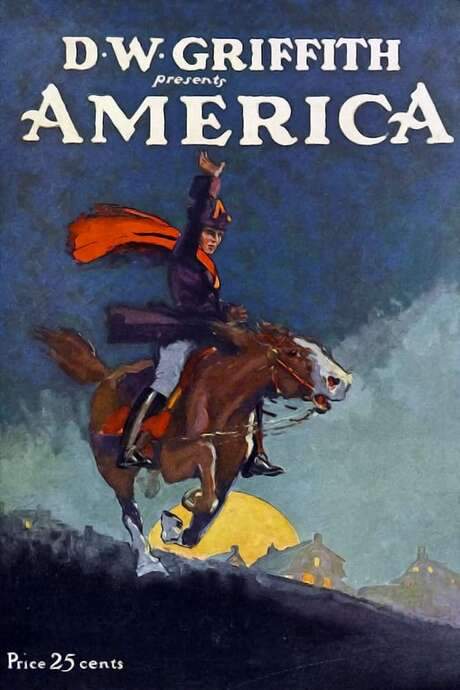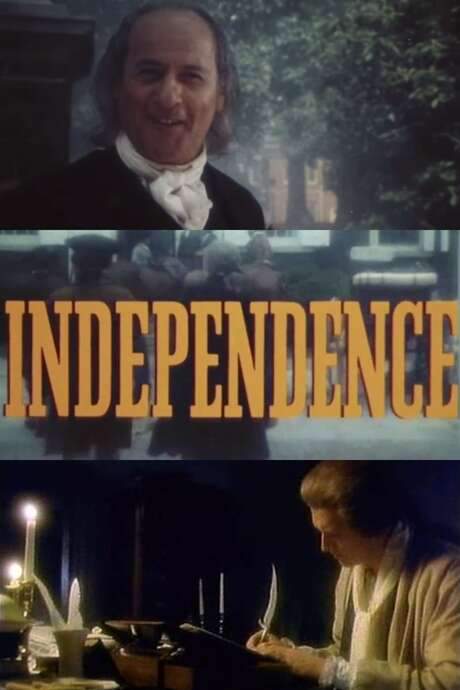
1776
Year: 1972
Runtime: 141 mins
Language: English
Director: Peter H. Hunt
This adaptation brings the award‑winning stage musical to the screen, dramatizing the 1776 Continental Congress in Philadelphia, where delegates work to create a governing framework for the new United States. Benjamin Franklin and John Adams task Thomas Jefferson with drafting a declaration announcing independence from British rule.
Warning: spoilers below!
Haven’t seen 1776 yet? This summary contains major spoilers. Bookmark the page, watch the movie, and come back for the full breakdown. If you're ready, scroll on and relive the story!
1776 (1972) – Full Plot Summary & Ending Explained
Read the complete plot breakdown of 1776 (1972), including all key story events, major twists, and the ending explained in detail. Discover what really happened—and what it all means.
William Daniels as John Adams, representing Massachusetts in the Second Continental Congress in Philadelphia, laments the body’s reluctance to debate independence and instead to grind through routine matters. He leans on the steady voice of his wife, Virginia Vestoff as Abigail Adams, for both solace and strategic counsel, knowing that a personal touch could help sway wavering delegates.
Howard Da Silva as Benjamin Franklin, one of the few who shares Adams’ dream of a new, independent nation, becomes a crucial ally. He suggests that someone else should introduce the idea of independence, so they enlist Richard Henry Lee of Virginia to return home, obtain permission from the state legislature, and present the motion to break from Britain. The plan hinges on gathering enough support from the reluctant delegates, and the atmosphere in Congress grows tense as tempers flare and factions emerge.
Lee returns, proposes the resolution, and faces stiff resistance from John Dickinson of Pennsylvania, a leading conservative who seeks reconciliation with Britain. The vote to debate the question proceeds, setting off a heated contest among the delegates. A pivotal moment arrives when Caesar Rodney of Delaware, battling cancer, collapses and must retreat from the chamber, depriving Adams of a crucial Delaware vote just as momentum shifts in favor of independence. A fresh delegation from New Jersey arrives, bringing news that Franklin’s son William, the Royal Governor of New Jersey, has been arrested, adding personal stakes to the political drama.
To derail the push for independence, Dickinson moves to demand a unanimous vote—arguing that no colony should break away without its own consent. Adams counters with a plan to postpone the vote in order to draft a formal declaration of grievances. John Hancock, the President of Congress, ultimately breaks the tie in favor of moving forward and appoints a committee to draft the declaration: Rex Robbins as Roger Sherman, John Myhers as Robert Livingston, Ken Howard as Thomas Jefferson, and David Ford as John Hancock.
Jefferson, initially reluctant to take on such a monumental task, agrees to serve as the primary writer after Adams urges him to accept the duty. A full week passes without a completed draft, and Adams summons his wife to Philadelphia to lend the necessary spark, while the delegation at large begins to recognize the weight of the decision before them. The narrative unfolds with the sense that history is being shaped, not merely debated.
To secure Maryland’s support for independence, Adams and Franklin accompany Samuel Chase to the army encampment at New Brunswick, New Jersey, taking Chase with them and bringing a sense of urgency to the cause. The next day, a military courier arrives with the grim news that his two best friends were killed at Lexington, underscoring the real cost of rebellion for many who serve in the Continental Army and Congress.
After their return, the Declaration is read aloud, and Congress begins to entertain numerous amendments. Jefferson is asked to reconsider some wording, and while he agrees to many changes, he objects to striking the reference to the King as a tyrant and to the issue of slavery. Edward Rutledge of South Carolina leads the Southern members in leaving the room in protest as Chase returns with Maryland’s vote in support of independence. Adams is urged to compromise further, but Franklin reminds him that achieving independence requires embracing a broad coalition, including those with opposing views, as part of the nation they are about to create. This exchange leaves Adams visibly unsettled, yet resolute.
A key turn comes on the day of the vote: July 2, 1776. The plan to drop the slavery language is settled for the moment, and Rutledge’s bloc along with others moves toward unity. Delaware’s three representatives deliver a mixed result, and Rodney is recalled to Cast a decisive vote in favor of independence, rather than seeing his state divided. When Dickinson appears ready to vote against the measure, Franklin proposes polling the Pennsylvania delegation. William Daniels would again oversee this moment, and the result hinges on James Wilson, who finally votes for independence to avoid a lasting mark on his reputation. Dickinson resigns from Congress, vowing to join the army, while Wilson’s decisive choice helps tilt the balance toward a new nation.
Meanwhile, Morris, whose estates have been dismantled and whose family has moved to safety, signs the parchment in protest despite not being authorized, an act that adds personal drama to the formal proceedings. As the final ceremonial bell tolls, Andrew McNair, the Congressional custodian, tolls out a grim cadence. With Delaware reconciled and the remaining states poised to declare, one by one the states sign the document, marking the birth of the United States of America.
no colony be torn away from its mother country without its own consent.
In the end, the room fills with a quiet, determined energy as the delegates affirm their commitment to a new union, and the signing ceremony seals a bold, controversial, and transformative moment in history. The film deftly balances political strategy, personal sacrifice, and the quiet, stubborn courage that underpins the birth of a nation, offering a thoughtful, human-centered portrait of figures who chose to risk everything for a future they believed in.
Last Updated: October 07, 2025 at 09:46
Unlock the Full Story of 1776
Don't stop at just watching — explore 1776 in full detail. From the complete plot summary and scene-by-scene timeline to character breakdowns, thematic analysis, and a deep dive into the ending — every page helps you truly understand what 1776 is all about. Plus, discover what's next after the movie.
1776 Timeline
Track the full timeline of 1776 with every major event arranged chronologically. Perfect for decoding non-linear storytelling, flashbacks, or parallel narratives with a clear scene-by-scene breakdown.

Similar Movies to 1776
Discover movies like 1776 that share similar genres, themes, and storytelling elements. Whether you’re drawn to the atmosphere, character arcs, or plot structure, these curated recommendations will help you explore more films you’ll love.
Explore More About Movie 1776
1776 (1972) Scene-by-Scene Movie Timeline
1776 (1972) Movie Characters, Themes & Settings
1776 (1972) Spoiler-Free Summary & Key Flow
Movies Like 1776 – Similar Titles You’ll Enjoy
Revolution (1985) Full Movie Breakdown
America (1924) Story Summary & Characters
The Declaration of Independence (1938) Full Movie Breakdown
John Adams (1000) Complete Plot Breakdown
Hamilton (2020) Story Summary & Characters
The Patriot (2000) Film Overview & Timeline
A More Perfect Union (1989) Movie Recap & Themes
Independence (1976) Full Summary & Key Details
America: The Motion Picture (2021) Full Movie Breakdown
Lafayette (1962) Detailed Story Recap
The Bill of Rights (1939) Detailed Story Recap
Liberty! (1000) Ending Explained & Film Insights
1789 (1974) Full Summary & Key Details
Alexander Hamilton (1931) Movie Recap & Themes
Amistad (1997) Complete Plot Breakdown

















